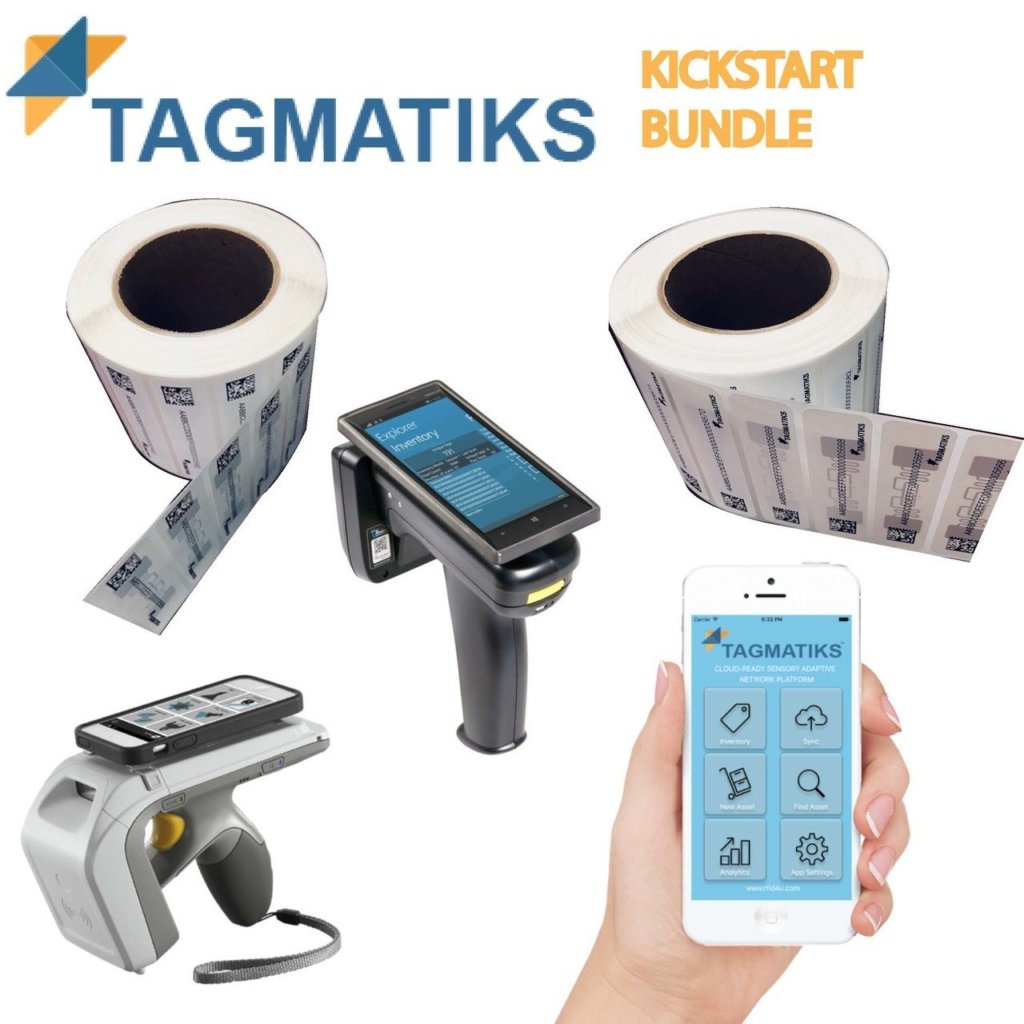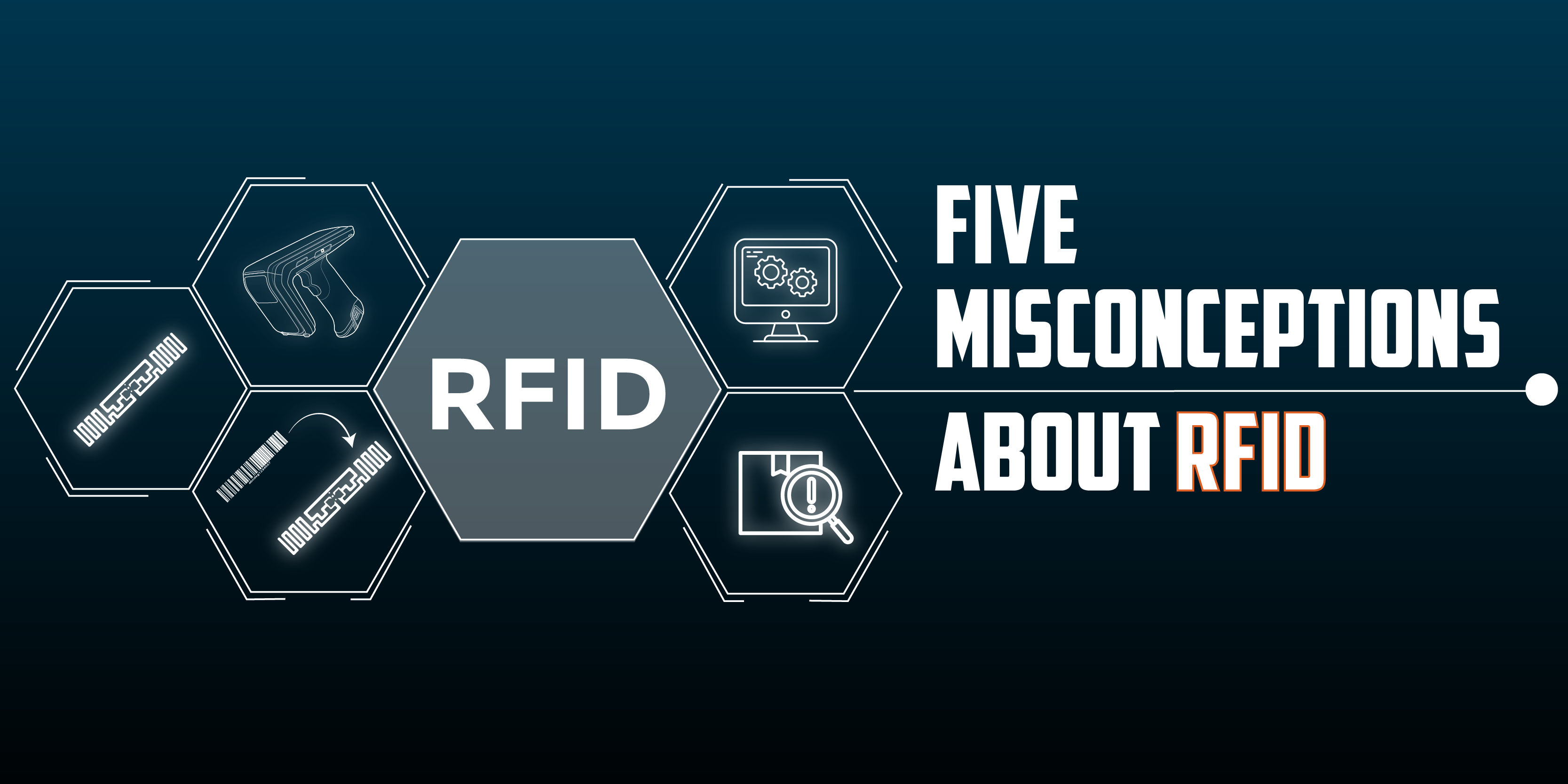1. RFID IS A SINGLE TECHNOLOGY.
RFID is actually a bundle of technologies—not just one. As the acronym for RFID (Radio Frequency Identification) calls out, the technology relies upon Radio Frequency for the identification, or presence, of items, goods or assets. Due to RF principles, adoption of technology/ government standards as well as performance, various frequency bands of RFID have taken off including:
a. Low Frequency (LF) RFID
LF RFID operates at 125-134 kHz and is commonly used for animal tracking, access control, and low-range industrial applications.
b. High Frequency (HF) RFID
HF RFID functions at 13.56 MHz and is widely used in applications such as contactless payment systems, library management, and smart cards.
c. Ultra High Frequency (RFID) / RAIN RFID
UHF RFID operates between 860-960 MHz, offering long read ranges and high-speed data transfer, making it ideal for inventory tracking and supply chain management.
d. Very High Frequency (VHF) RFID
VHF RFID is less common but is used in specialized applications requiring moderate read ranges.
e. Ultra Wide Band (UWB) RFID
UWB RFID provides precise location tracking capabilities and is used in real-time location systems (RTLS) for industries such as healthcare and logistics.
Each of these technologies has vetted out use cases, standards and protocols. To learn more about this, visit the RFID4U Basics & Resources Module.
2. RFID IS EXPENSIVE TO PILOT / TRY OUT.
The benefits of adopting RFID are indisputable; however, the challenge most organizations face is deciding what’s the most cost effective way to pilot RFID technology. When evaluating RFID, or any other technology, there’s a few things enterprises need to keep into consideration including:
1. Hardware selection: Choosing the Right RFID Components
Organizations must select appropriate RFID tags, readers, and antennas based on their specific use cases.
2. Software selection: The Importance of RFID Middleware
RFID business applications, middleware, and integration capabilities play a crucial role in maximizing the benefits of RFID data collection.
3. Business Process Management: Ensuring Seamless Integration
A well-defined business process ensures that RFID technology is implemented effectively and delivers the intended benefits.
To facilitate the jumpstarting pilot process of any RFID initiate, we’ve created a kick-start bundle which includes an RFID handheld of your choice, RFID tags as well as 30 day trial access to an enterprise grade RFID software application(TagMatiks). The bundle also includes the ability to add additional varieties of RFID tags and readers.

3. RFID IS NEWER THAN BARCODE
Surprisingly, RFID is actually an older technology than Barcode. RFID was first used in World War II by various countries; while the first patent for barcode was filed only in 1949.
4. RFID DATA IS DIFFICULT TO MANAGE AND INTEGRATE.
RFID has the ability to easily and quickly capture data that may be very difficult and expensive to do otherwise. Once this valuable data is collected, it’s important to be able to bring this data back to core business systems such as an ERP, WMS or MES.
TagMatiks Core , RFID4U’s RFID Middleware, provides the ability to quickly integrate RFID data using APIs (both REST & SOAP), databases endpoints (MS SQL, Oracle DB, IBM DB2, MySQL, PostgreSQL, etc.) or simply in flat file like CSV or Text. In addition to the ease of data integration, the solution also provides the ability to filter, aggregate and massage data to a desired format. This includes the ability to automatically parse GS1’s Tag Data Standards for RFID. (Learn more on RFID Standards)
5. RFID IS JUST ABOUT “IDS”
RFID is much more than just “identification” of items or assets. With the emergence of IoT, RFID technology is being used for numerous use cases above and beyond simply capturing presence. A few use cases include:
Capturing Sensor Data
Specialized RFID tags can collect temperature, humidity, GPS location, and movement data, making them useful in logistics, healthcare, and environmental monitoring.
Hazardous Area Assets
RFID enables data collection from assets in hazardous areas, reducing the need for human exposure to dangerous environments.
User Engagement
NFC-based RFID technology is widely used for marketing campaigns, enhancing customer interaction and brand engagement.
Brand Protection
RFID helps combat counterfeiting by verifying product authenticity and ensuring brand protection.
Conclusion: The Reality of RFID Technology
RFID technology is often misunderstood, but once these misconceptions are cleared, businesses can see its true potential. Whether it’s improving inventory tracking, enhancing security, or integrating with IoT, RFID offers limitless possibilities. Are you considering RFID for your business? Explore solutions like TagMatiks and start your RFID journey today!
